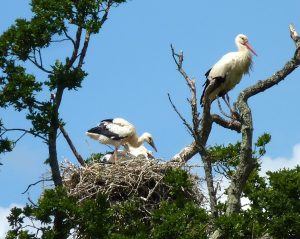Planning Applications – who does what?
Ferring Conservation Group spends a lot of time monitoring the applications for new housing, commercial development and large extensions or rebuilding where they impinge unfairly on neighbours, the streetscape or countryside. We often ask our members to submit individual objections but we rarely explain how the system works. Typically which Councils are involved, or what happens when there is an appeal – it is all rather complicated:
The starting point is the law:
Under the Town and Country Planning Act 1990 (as amended), planning permission is required for any development of land. Local Planning Authorities (LPAs) – certain local councils and other bodies – are responsible for examining applications for planning permission and deciding whether to approve or refuse them.
In our case the LPA is Arun District Council. They are required to draw up a Local Plan which must be submitted and endorsed by HM Planning Inspectorate (part of national government). The Local Plan and Neighbourhood Development Plan (NDP), where there is one, must be consistent with the Government’s National Planning Policy Framework (NPPF).
Applications have to be decided as to whether they are consistent with, or a departure from, the Development Plan, unless there are material considerations that indicate otherwise.
The LPAs are obliged to consult the body responsible for Highways (in our case West Sussex County Council) for their view as to the implications of any development that affects traffic, parking or road safety.
If West Sussex County Council considers that the application would have a severe detrimental effect on the local highway network, that is usually the end of the matter and the application is refused (they rarely do this – usually they just give advice on parking and access).
The LPA must enable the Parish Council to produce a Neighbourhood Development Plan, as we have in Ferring, but this NDP must be consistent with the Local Plan (as above). Arun District Council is obliged to consult Ferring Parish Council on every planning application in the parish area. Unfortunately not all Councils give full consideration to Parish Council views.
This is very much a top-down planning system not the ‘Localism’ that we were promised a few years ago. The Government sets the National Planning Policy Framework (NPPF) and Arun DC has to produce a Local Plan that is consistent with it. Also the Parish Council has to produce a Neighbourhood Development Plan (NDP) which is consistent with the Local Plan. The system has become even more restrictive in recent years because the Government now sets housing-site delivery requirements for each LPA and a rule that each LPA must have a five-year supply of housing land.
The other way that LPAs are weakened is that when the Council have decided to refuse an application, for good and proper reasons, the developer can appeal to the Secretary of State (HM Planning Inspectorate) against that decision. The Government then appoints a Planning Inspector to decide the appeal – and his/her decision is final – it can only be challenged in the High Court (please note that the appeal system allows only the applicant to appeal, not the objectors!).
Where do local residents come in all this?
Well, we elect the Councillors and the whole country elects the Government. We can send Arun DC our objections against the applications we consider unsuitable then the Council ‘takes them into consideration’. Ferring Conservation Group sends in many objections to the applications we feel are unsuitable – we win some and we lose some. The Council may support local objections and refuse authority to develop but then the applicant can appeal to HM Planning Inspectorate who has the final say. But the Inspector’s decision is open to Judical Review, If the High Court rules that the Inspector has made a mistake in law it can quash that decision. This is what happened in the Chatsmore Farm case.
The Council wins some and loses some, and challenges in the High Court are rare and even more rarely successful.
It is a very unsatisfactory system which fails to take into account local democracy.
Ed Miller

